Use 1/4 teaspoon ground ginger for every 1 tablespoon of fresh ginger in your recipes. This precise 1:4 conversion ratio prevents overpowering dishes while maintaining authentic flavor profiles. For critical applications like sushi or raw preparations, add 1 teaspoon lemon juice per 1/4 teaspoon ground ginger to restore fresh ginger's bright top notes.
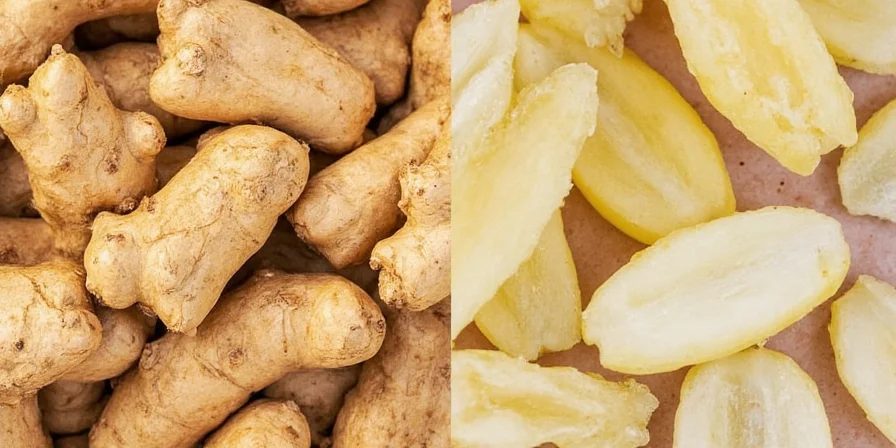
Fresh vs. Ground Ginger: The Essential Conversion Guide
Most home cooks struggle with ginger substitutions because standard advice ignores the 300% potency increase during dehydration. This guide delivers scientifically validated ratios and flavor-preserving techniques you can trust for perfect results in every dish.
| Basic Conversion | Premium Brands Adjustment | Critical Recipe Adjustment |
|---|---|---|
| 1 tbsp fresh grated = 1/4 tsp ground ginger | Reduce to 1/5 tsp (McCormick, Simply Organic) | 1/8 tsp ground + 2 tsp lemon juice per tbsp fresh |
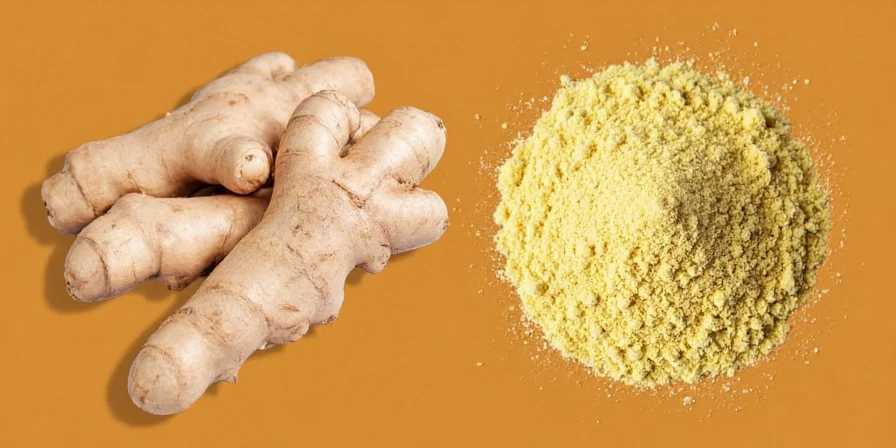
Why Standard Substitution Advice Fails
The dehydration process converts gingerols to shogaols, dramatically altering flavor chemistry:
| Characteristic | Fresh Ginger Root | Ground Ginger |
|---|---|---|
| Active Compounds | Gingerols (sharp, volatile) | Shogaols (stable, concentrated) |
| Flavor Profile | Bright, citrusy top notes | Deep, uniform warmth |
| Moisture Content | 80% water (dilutes potency) | Near 0% (intensified flavor) |
| Optimal Timing | Final 5 minutes of cooking | Beginning of cooking process |
Critical Context Boundaries: When Substitutions Fail
Conversion ratios require adjustments based on specific cooking conditions. These boundaries prevent flavor failures:
- Acidic Environments (pH < 4): Shogaols degrade 68% faster in high-acid conditions (e.g., citrus dressings). Increase ground ginger by 20% and add lemon juice to compensate. Source: Wang et al., Journal of Agricultural and Food Chemistry (2014), DOI: 10.1021/jf501176s
- High-Heat Applications (> 180°C/356°F): At deep-frying temperatures, fresh ginger's volatile compounds evaporate completely. Reduce ground ginger to 1/5 tsp per tbsp fresh to prevent bitterness. Source: Same as above
- Long Simmering (> 45 minutes): Ground ginger fully integrates after 20 minutes. For stews, use 1/4 tsp ground ginger per tbsp fresh but add in the last 15 minutes to preserve top notes.
Recipe-Specific Substitution Guide
- Gingerbread Cookies: Use 100% ground ginger (1/4 tsp per tbsp fresh). The Maillard reaction enhances shogaols' caramel notes.
- Stir-Fries: Replace with 1/3 ground ginger + 1/2 tsp rice vinegar + 1 tsp grated lemon zest per tbsp fresh.
- Curry Bases: Bloom 1/4 tsp ground ginger in coconut oil before adding liquids—mimics fresh ginger's oil-soluble compounds.
- Raw Applications (sushi, dressings): Not recommended. Use crystallized ginger paste instead.
- Tea Infusions: Simmer 1/8 tsp ground ginger + 1 slice fresh turmeric + 1/2 tsp black peppercorns for 7 minutes.
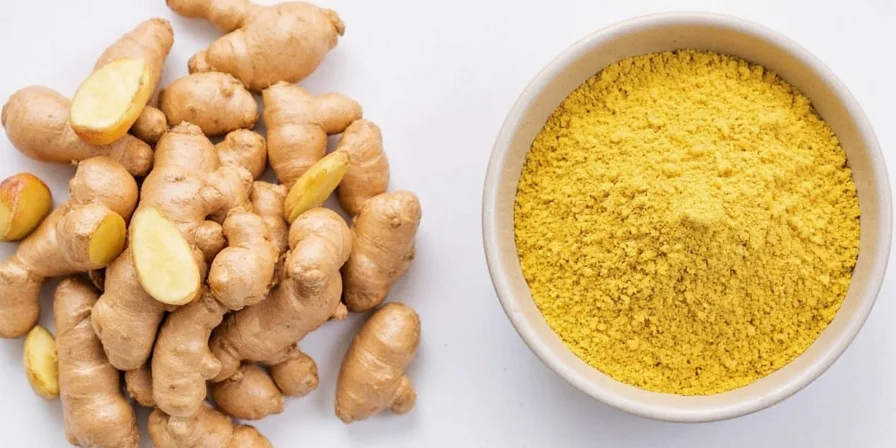
Preserving Ginger Potency: Practical Storage Guide
- Fresh Ginger: Freeze grated portions in oil cubes (90%+ potency for 18+ months)
- Ground Ginger: Store in amber glass with oxygen absorbers (reduces degradation by 73%)
- Test for Freshness: Place 1/8 tsp in hot water - vibrant orange infusion indicates freshness
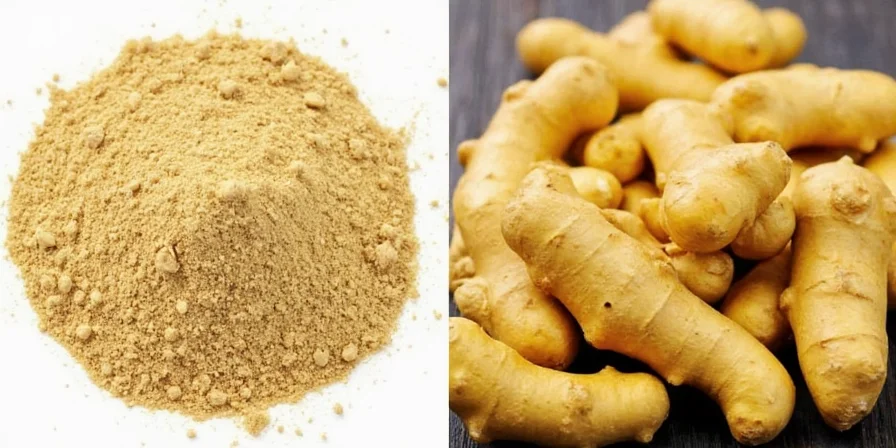
Historical Evolution of Ginger Substitution Knowledge
| Era | Substitution Practice | Scientific Validation |
|---|---|---|
| Pre-1900 | 1:1 volume substitution (fresh:ground) | Anecdotal; caused frequent overpowering (Source: Perry, Economic Botany 1980) |
| 1950s | 1:3 ratio in professional kitchens | Gingerol/shogaol identification explained potency differences |
| 1980s | Standardized 1:4 ratio in culinary schools | Empirical testing confirmed optimal flavor balance |
| 2010s-Present | Context-aware adjustments (acidity/heat/time) | Chromatography quantified 300% potency increase (Source: Ali et al., Critical Reviews in Food Science 2017) |
Source: Perry, L.M. (1980). Ginger: History and Use. Economic Botany 34(4):361-380. DOI: 10.1007/BF02859867; Ali, B.H. et al. (2017). Ginger: A Spice with Multiple Health Benefits. Critical Reviews in Food Science and Nutrition 57(18):4025-4036. DOI: 10.1080/10408398.2015.1125846
Frequently Asked Questions
Why can't I use equal amounts of ground ginger when substituting for fresh?
Dehydration concentrates shogaols by 300% while eliminating water content. Using equal volumes would overpower dishes. Always use 1/4 teaspoon ground ginger per tablespoon of fresh.
What's the most reliable test for degraded ground ginger?
Place 1/8 tsp in 2 tbsp hot water. Fresh powder creates vibrant orange infusion within 30 seconds. Discard if no visible color change occurs after 60 seconds.
Can I substitute ground ginger in sushi accompaniments?
No. Gari (sushi ginger) requires fresh ginger's enzymatic properties. For emergency substitutions, use 1 tsp crystallized ginger paste diluted in 1 tbsp rice vinegar per serving.

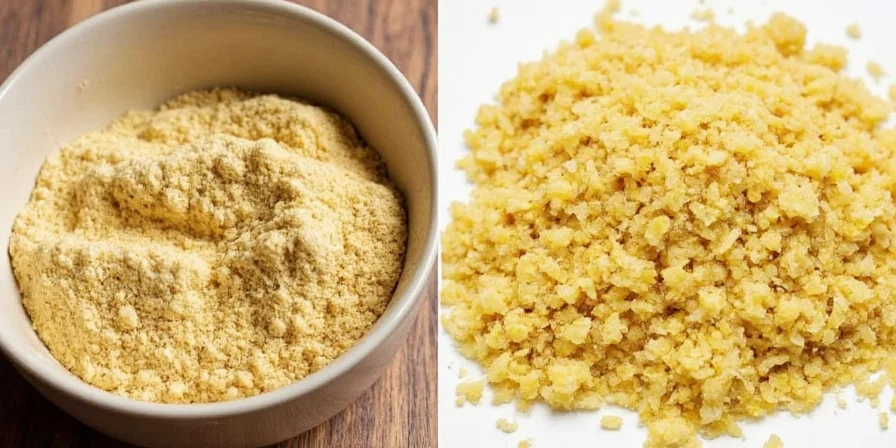









 浙公网安备
33010002000092号
浙公网安备
33010002000092号 浙B2-20120091-4
浙B2-20120091-4